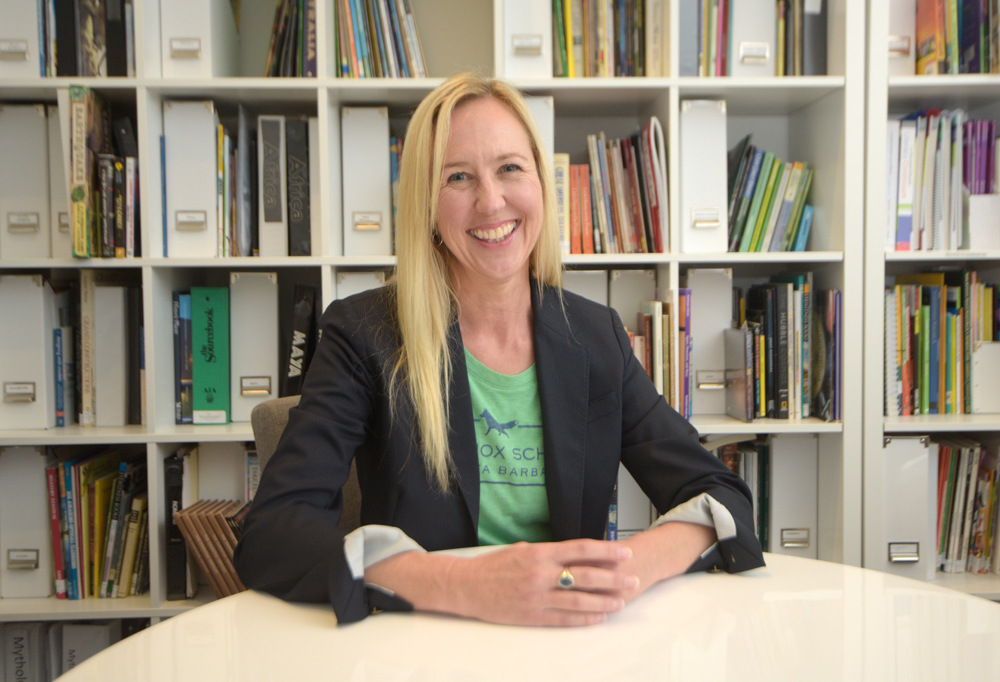Angela Tanner’s Gift for Gifted Learners
The Knox School’s Founder Fosters Intellectual Curiosity in Nurturing Environment

Angela Tanner is the founder and executive director of The Knox School of Santa Barbara, a private, K-8 school specifically designed for the gifted learner.
What was the inspiration for the Knox School? The journey that led to the founding of The Knox School began as a very personal one, born of the frustrations and heartbreak of advocating for my own children. Craving true intellectual connection, social acceptance, and authentic success, gifted children confront unique challenges that tend to perpetuate an outsider status. Typically facing a one-size-fits-all education system and a mainstream culture that does not value their deep intellectual curiosity, high ethical standards, and emotional sensitivities, our nation’s gifted and talented are far too often marginalized and unserved.
The mission of The Knox School is to provide a stimulating and nurturing environment where, alongside an engaging and challenging curriculum, the social and emotional needs of gifted and talented students are respected and compassionately supported. Our vision is that giftedness and high potential are fully recognized, universally valued, and actively nurtured to support gifted children in reaching for their personal best and contributing to their communities.

What are your student demographics? We opened in September of 2013 with five students. Currently, the school serves approximately 30 children in grades K-8. At least 20 percent benefit from financial aid.
What differentiates the “gifted” child from the bright or smart child? Giftedness, intelligence, and talent are fluid concepts, and definitions and assessments of these traits are hotly debated topics. The federal government developed a guideline in the 1972 Marland Report to Congress that states, “Students, children, or youth who give evidence of high achievement capability in areas such as intellectual, creative, artistic, or leadership capacity, or in specific academic fields, and who need services and activities not ordinarily provided by the school in order to fully develop those capabilities.” States and districts, however, are not required to use the federal definition, although many states base theirs on the federal definition.
The Columbus Group (1991), in an attempt to more adequately define the essence of giftedness as separate from achievement, defines giftedness as “asynchronous development in which advanced cognitive abilities and heightened intensity combine to create inner experiences and awareness that are qualitatively different from the norm.” The Knox School subscribes to the Columbus Group definition.
Are there specific criteria you use to identify the gifted student? Quantitatively, giftedness is often measured through IQ testing. The IQs of a sufficiently large population of individuals form a normal distribution (bell curve) with approximately 68 percent of individuals with IQ scores between 85 and 115. Giftedness is often categorized thus:
Gifted: 130-138
Highly Gifted: 138-145
Exceptionally Gifted: 145-152
Profoundly Gifted: 152-160
A particularly important point to make is this: The farther away from the absolute norm of 100 a child is, the greater the need for special educational accommodations, regardless of whether the distance is on the left or right of 100. For example, no one argues that a child with an IQ of 60 needs specialized services in order for that child to fulfill his/her potential. Of course they do. But a child with an IQ of 140 is as different from the norm as the child with an IQ of 60, and also requires specific educational accommodations to maximize his/her potential.

What percent of the population is truly “gifted”? Depending on the definition of giftedness being used, anywhere from 3 percent to 10 percent of the population is gifted.
What are the most common cognitive, affective, and physical characteristics of gifted children?
Emotionally sensitive
Physically sensitive
Intense reactions
Long attention span when something interests them
Capable but not necessarily performing well in school (underachieving)
Perfectionistic
Large, advanced vocabulary
Asks many questions, rarely settling for a simple explanation
Energetic
Learns information quickly
Excellent memory
Extraordinarily creative or talented in specific area
Parents who are overwhelmed, frustrated, or exhausted!
Are gifted children often underserved in the school system? The more of the above characteristics embodied in one child, the more challenging a traditional school environment can be for that child and the more vulnerable they are to being labeled, marginalized, or unserved. Not all gifted children need progressive education in order to maximize their potential — those we call “school-house gifted” are able to acquiesce to a typical educational approach and often do fine in a traditional setting, especially if some sort of advancement in the form of grade skipping is available to them.
What can happen when gifted students are not engaged in a school setting? As any parent or teacher of a gifted child knows too well, most gifted students (especially highly to profoundly gifted children) face unique challenges and require specialized and focused attention to overcome impediments and maximize their talents. Without educational opportunity and challenge, children who are gifted may hide their abilities, bury them in underachievement, or become school dropouts.
Gifted girls, being particularly susceptible to the desire to fit in, often sabotage their talents for the sake of conforming to their peers and play down their intelligence. Gifted boys who are not challenged and understood usually do not become teacher pleasers; they become “problem children” in their attempts to gain stimulation in whatever way they can.
When we realize that gifted children are children with special needs, the importance of early identification becomes clearer. Why do we identify developmentally delayed children at the very earliest possible moment? Because everyone agrees that early intervention makes the most difference in a child’s life. Why wouldn’t the same general principles of development apply to the gifted?
Sadly, rather than investing in high-IQ children, American society has moved in the opposite direction since the 1930s. There is an anti-intellectual culture that promotes a stigma around the very term of giftedness, let alone on the allocation of resources to cultivate these children’s abilities. School districts often find that curtailing or completely eliminating programs for their gifted learners are the least controversial budget cuts that they can make.
See knoxschoolsb.org. For more info on gifted children, see National Association for Gifted Children (nagc.org), California Association for the Gifted (cagifted.org), and Supporting Emotional Needs of the Gifted (sengifted.org).



